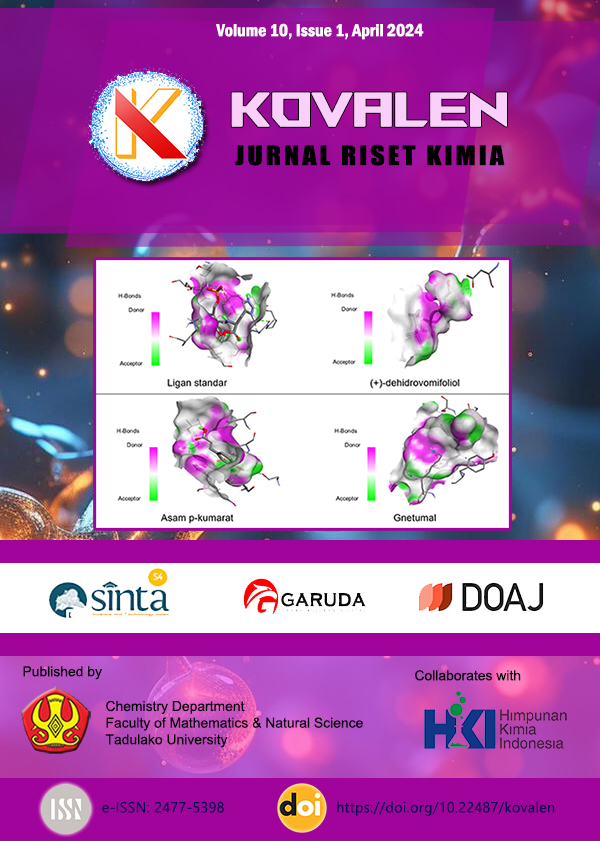Main Article Content
Abstract
Histamine in fish is formed due to histidine decarboxylase which occurs due to decay by bacteria. In the Maluku community, melinjo leaves (Gnetum gnemon) are used as boiled water in processing rotten fish so that the decay process is inhibited. The compound content of melinjo leaves is tethered to the macromolecule decarboxylase PDB ID (4E1O). Test ligands, seven components of melinjo leaves were optimized using Gaussian. Ligands were bound to the receptor with AutoDock-Vina in grid box size and evaluated with Discovery Studio. The tethering results showed no ligand with affinity exceeding the standard ligand. However, three test ligands were close to the standard such as, dehydrovomifoliol affinity -6.7 kcal/mol, inhibition constant 1.2269 x 10-5. P-cumaric acid and gnetumal affinity -6.1 kcal/mol, inhibition constant 3.3778 x 10-5. Amino acid residue interactions showed hydrogen and hydrophobic bonding. The results of the binding affinity of the test ligand have not been able to be equivalent to the affinity of the standard ligand. However, the dehydrovomifoliol ligand is close to the affinity of the standard with a value of -6.7 kcal/mol and an RMSD of 2 Ã…. Thus, dehydrovomifoliol compounds from melinjo leaves show antihistamine effects as histidine decarboxylase inhibitors with promising potential.

